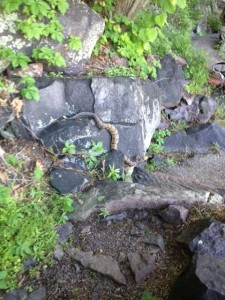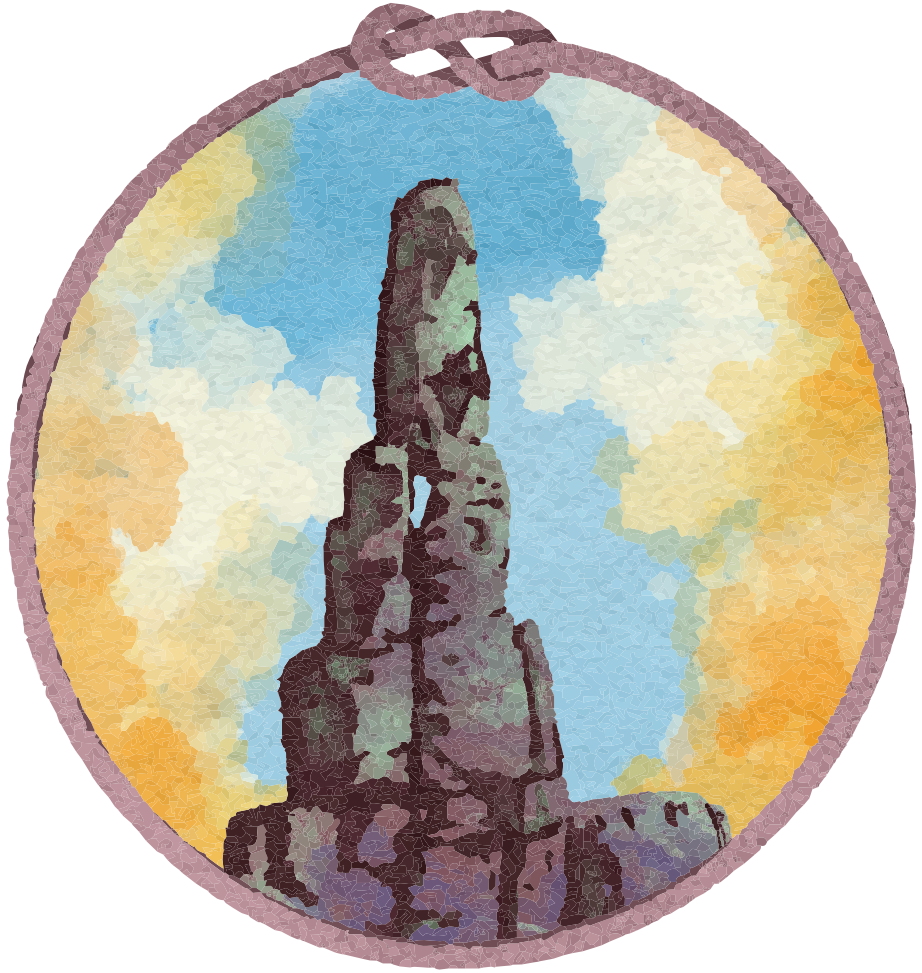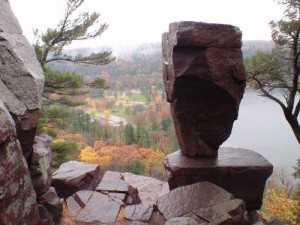TIMBER RATTLER (Crotalus Horridus)
 Bright and early last Thursday morning, four seasoned Apex guides were hiking up the CCC trail to set up a climbing site for a group of enthusiastic seventh graders from Roscoe Middle School. Low and behold… a three and a half foot timber rattler on the trail! The first guide and I stepped right over the snake without noticing it. Our group was split – with the two of us on one side and the others on the other side.
Bright and early last Thursday morning, four seasoned Apex guides were hiking up the CCC trail to set up a climbing site for a group of enthusiastic seventh graders from Roscoe Middle School. Low and behold… a three and a half foot timber rattler on the trail! The first guide and I stepped right over the snake without noticing it. Our group was split – with the two of us on one side and the others on the other side.
What to do????
After investigating, photographs and a lengthy discussion, our group decided to mark the trail with a hand-written notes and green static rope.
Timber rattlers are one of North America’s most venomous snake – recognizable by their stocky appearance, yellow or black coloration and brown and black cross-bands. Their heads are triangular and their scales are ridged, making it appear that they have rough skin. Their distinctive rattle is created by loose horny segments in the tail. When you hear the rattle, the snake is agitated. Let me tell you, we certainly heard it load and clear!
Timber rattlers are, in fact, shy. In fact, none of us have ever seen one at the park – and we have been climbing at Devil’s Lake for years. The snakes are active mid-April to mid-October and prefer deciduous forests in rugged terrain. In winter, they hole up in dens with other snakes. They survive on small mammals, birds, toads and garter snakes. Their fangs are long and can pierce hiking boots. The venom is potent. If you are bitten by a timber rattler, seek medical treatment immediately.
For a list of snakes at Devil’s Lake, check this out!



